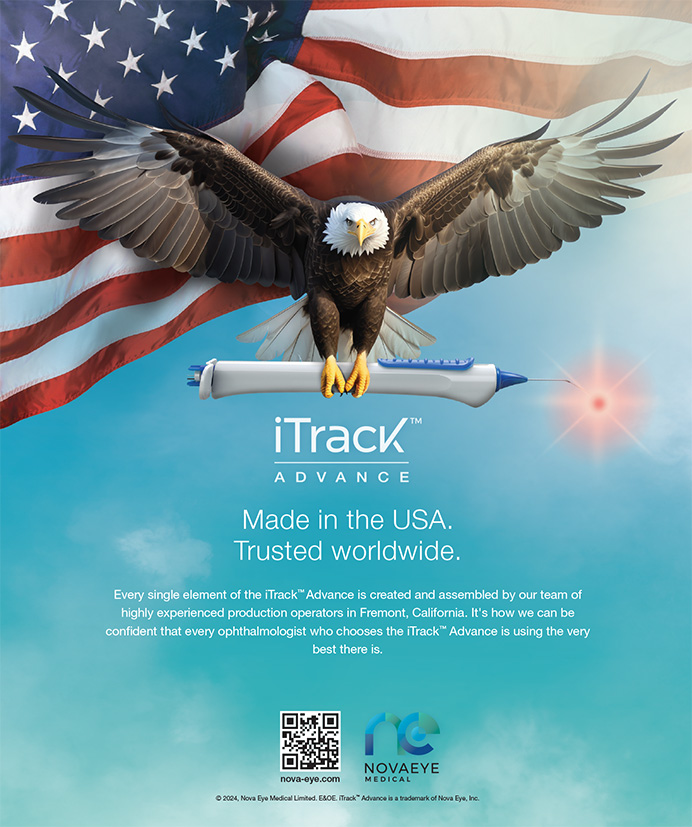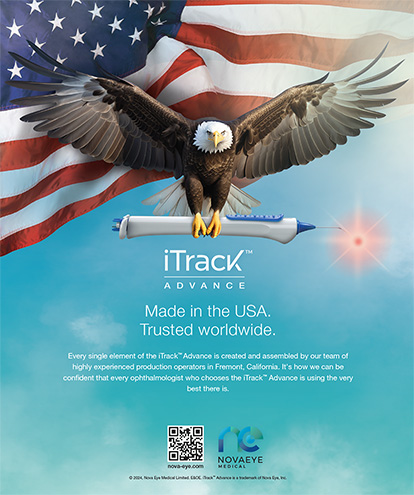I am a general ophthalmologist from an ordinary midwestern town with a population of approximately 100,000. In the past 18 months, I have implanted more than 400 Crystalens IOLs (Eyeonics, Inc., Aliso Viejo, CA) in cataract patients. My staff and I have a 30 to 40 conversion rate with these lenses, which we accomplished without spending a single dollar on external marketing. In my experience, a midsized town has the advantage (compared with metropolitan areas) of a far greater cataract volume. The challenge is to educate patients about presbyopia-correcting IOLs and show them how this new technology can transform their lives—without overwhelming them.
PRACTICE PROFILE
I am in charge of an optical shop and am fortunate enough to have five excellent opticians. Two opticians consistently top the others in selling and, most importantly, in patient satisfaction. One is a high-energy, talkative young man, and the other is the polar opposite, a taciturn middle-aged woman. How do these two people with completely different personalities sell so well? I discovered that they share three common characteristics. First, they know their products thoroughly. They know the technology and the advantages and disadvantages of everything they sell. Second, they know their patients. They listen to the individual, ask selective questions, and are able to quickly discern the patient's needs and offer the most appropriate technology. Last, but most importantly, these opticians truly believe in the superiority of the products they sell. They not only believe in the products, they also believe in themselves—their own knowledge, expertise, and ability to deliver outstanding results to their patients.
EXPERIENCE WITH PRESBYOPIA- CORRECTING IOLS
Eighteen months ago, I was fortunate enough to meet a remarkable patient who asked for the Crystalens by name. She said her brother had undergone cataract surgery in California and absolutely loves this lens. I told her I was not certified in implanting the Crystalens, and she said she would wait for me. Two months later, I took the Crystalens course, and 5 days after that, I implanted the lens in this patient as well as in two others. My first patient achieved 20/20 vision and read J2 the very next day. The Crystalens has been my premium IOL of choice ever since.
After having implanted 400 Crystalens IOLs, I know my product extremely well. The Crystalens IOL offers a number of advantages: the first and foremost is the crisp, clear vision that patients achieve. One patient told me that after receiving a Crystalens implant, "It's like watching high-definition TV." There is an instant and tremendous "wow" factor, and I have actually had Crystalens patients convert others in our own waiting room.
Another advantage of the Crystalens is that it works very well in just one eye, which is good news for patients who do not have bilateral cataracts. In fact, some of my favorite candidates are those who already have a monofocal lens in their dominant eye and 20/20 vision at distance. They understand very well what it means not to see up close and instantly grasp the advantage of reading again. Also, in a patient who genuinely wants this lens but cannot afford it bilaterally, I can put the Crystalens in just one eye and still give him very respectable reading vision.
LEARNING THROUGH EXPERIENCE
When I first started my practice, I made the mistake of thinking that all my patients wanted to know is how the lens works and how much it costs. I started out leading the entire discussion myself and quickly began running behind schedule in terms of seeing patients. You have to involve your technicians, who should be confident, positive, and supportive, because they will become both educator and counselor to your patients. My technicians know my patient-selection criteria and automatically present the lens only to qualified patients. They then put a small sticker on the chart that says "yes" or "no" regarding the presbyopia-correcting IOLs, which eye should be implanted, and the reason for that choice. If a patient cannot afford this lens, my techs place a dollar sign in the chart, and I avoid talking about the presbyopia-correcting IOLs. My technicians automatically bring up financing, which usually prompts the patient to indicate whether money is really the issue.
LESSONS LEARNED IN PATIENT COUNSELING
Cataract patients are a different group from the LASIK population. My advice is to always have a spouse or family members, especially children, in the room during your discussion. First of all, the cataract patient is elderly and quite unnerved by the prospect of surgery. Remember, unlike the LASIK patient who already knows that he wants surgery, some cataract patients may have just realized for the first time that they need surgery. They may be so nervous that they only hear a fraction of the preoperative discussion and sometimes say "no" just to avoid making a decision. The spouse and other family members are typically much more focused and usually agreeable that the patient should receive the very best care.
With the cataract population, I think that even a short discussion about surgical options with the doctor carries a considerable weight. The patient really wants to know what the doctor recommends, and most doctors never get to that point. As the doctor, I bring medical judgment as well as the confidence that only an experienced surgeon can bring.
My advice is to keep it simple. I tell my patients that having cataract surgery is just like taking out a frosty window and putting a clear plastic implant in its place. I tell them that they have a choice of IOLs, and whatever lens they choose is the one they will have to live with for the rest of their lives. I explain that there are three distances in human vision: far, intermediate, and near. The traditional lenses provide them with one of the three distances. Most patients choose to have far distance vision, thus needing glasses for the computer and reading—forever. The Crystalens will give them two distances out of three. Actually, the lens provides more than two distances of vision, but it is better to promise less and deliver more. I tell my patients that I will target far and intermediate in their dominant eye and intermediate and near vision in their nondominant eye. That way, they will have all three distances between their two eyes. They seem to grasp this concept very well.
Never promise patients perfect vision. I tell them that right now, there is not a single lens out there that can guarantee they will never have to wear a pair of glasses ever again—it is simply not that kind of surgery. I tell every cataract patient that he should expect to wear glasses for night driving and for reading very small print. After implanting 400 Crystalens IOLs, I have prescribed approximately 20 pairs of glasses, most of which are for residual astigmatism. We charge patients $250 extra for limbal relaxing incisions to correct their astigmatism, but some of these patients are OK with glasses for night driving and do not opt for the enhancement surgery.
Educated patients are your best patients, and the sooner you educate them, the better. We start telling patients about the presbyopia-correcting IOLs before they actually need cataract surgery. Patients then have time to focus on upgrading their lens and planning for the added expense. They return to our practice having converted virtually 100.
In a small town, it is easier to "win friends and influence people." I performed cataract surgery on a prominent local family doctor, and he was so pleased with his newfound vision that he tells all his patients about it. Be sure to educate your referring optometrists about presbyopia-correcting IOLs as well. Do not take them to a fancy restaurant and show them slides; bring them to your office and show them happy patients.
DEFINING SUCCESS
Sixteen years ago, I was trying to decide whether to get into this new area called refractive surgery. I was fortunate enough to take a course by Spencer Thornton, MD, of Memphis, Tennessee, and he inspired me tremendously by talking about the "magic" of refractive surgery: the joy and the sheer exhilaration of providing sight to people who have never seen with their own eyes. Success is not about numbers or percentages; it is about making patients happy, one at a time. We should believe in the magic and believe in ourselves.
Sandra Yeh, MD, is the President, CEO, and founding partner of Prairie Eye Center in Springfield, Illinois. Dr. Yeh is a consultant for Eyeonics, Inc. She may be reached at (217) 698-3030; syeh2020@aol.com.


